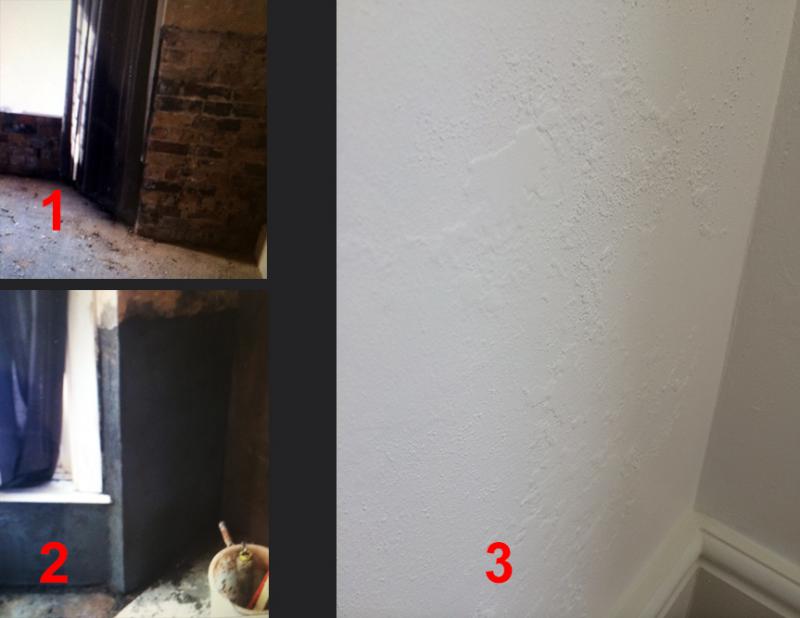Hi all
We recently bought a lovely Victorian 3-bed semi in London...
Downstairs, the interior of the wall that borders the garden had a lot of damp. So up to a height of about 1.5m we hacked off all the plaster back to the brick, and replaced with a sand/cement render mixed with sika. But the nice new paint work is now bubbling up in certain places (not all), along the sand/cement render area. See here:
We also installed a drain filled with pebbles along the outside wall + lots of new airbricks, due to high ground level.
It's only been 6 weeks since we did the work, is time a factor? The bricks were pretty wet due to the rainy winter we had. But this lovely new paint work is getting ruined!
Best
We recently bought a lovely Victorian 3-bed semi in London...
Downstairs, the interior of the wall that borders the garden had a lot of damp. So up to a height of about 1.5m we hacked off all the plaster back to the brick, and replaced with a sand/cement render mixed with sika. But the nice new paint work is now bubbling up in certain places (not all), along the sand/cement render area. See here:
We also installed a drain filled with pebbles along the outside wall + lots of new airbricks, due to high ground level.
It's only been 6 weeks since we did the work, is time a factor? The bricks were pretty wet due to the rainy winter we had. But this lovely new paint work is getting ruined!
Best


